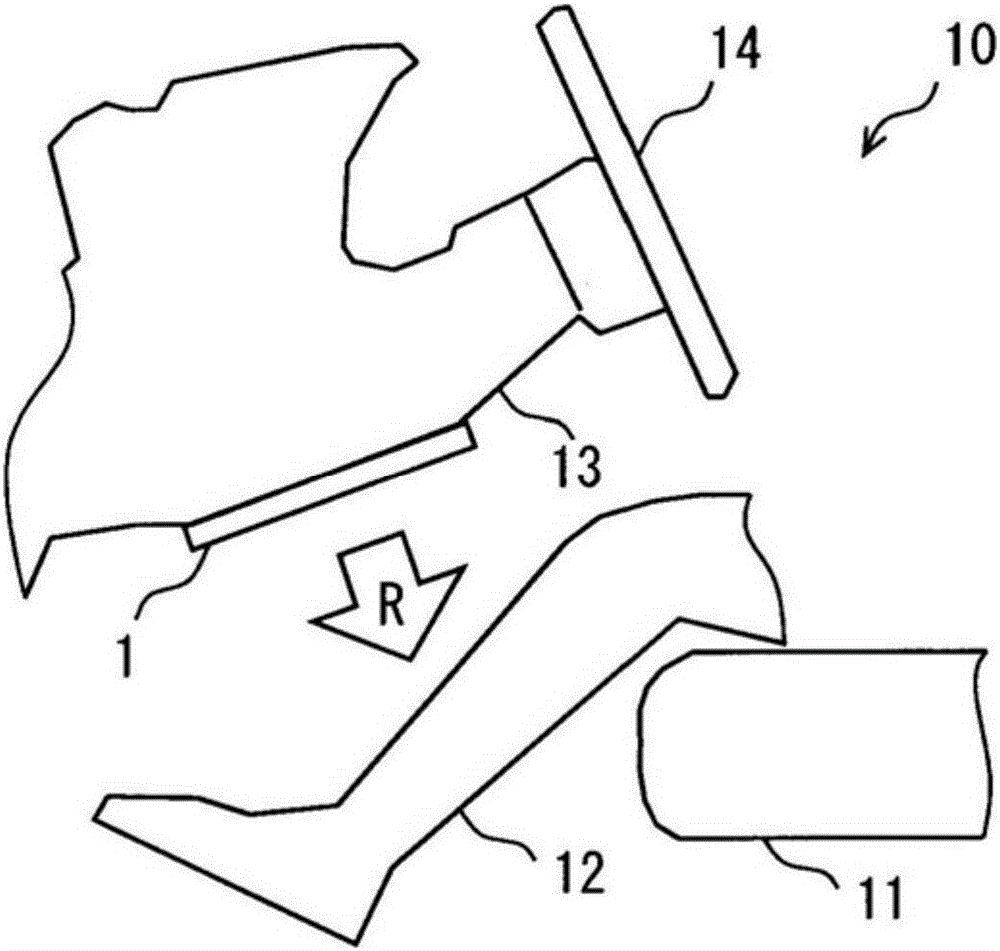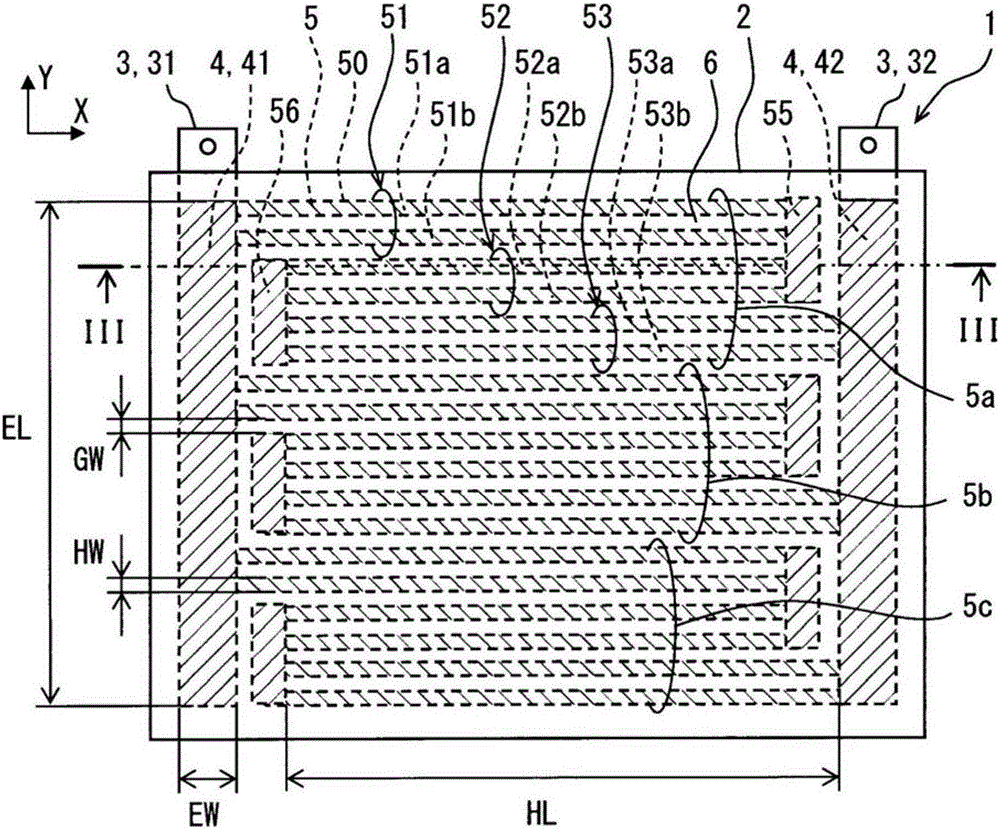Radiant heater
A radiant heater and radiant heat technology, applied in electric heating devices, air heaters, fluid heaters, etc., can solve the problems of increasing heat capacity of radiant heater devices
- Summary
- Abstract
- Description
- Claims
- Application Information
AI Technical Summary
Problems solved by technology
Method used
Image
Examples
no. 1 approach
[0044] exist figure 1 Among them, the radiant heater device 1 of the first embodiment is installed in a room of a moving body such as a road vehicle, a ship, and an aircraft. The device 1 forms part of a heating device 10 for indoor use. The device 1 is an electric heater that is supplied with power from a power source such as a battery and a generator mounted on a mobile body to generate heat. The device 1 is formed in a thin plate shape. The device 1 generates heat when power is supplied. In order to warm an object positioned in a direction perpendicular to the surface of the device 1 , the device 1 radiates radiant heat R mainly in a direction perpendicular to its surface.
[0045] A seat 11 for seating an occupant 12 is provided indoors. The device 1 is installed indoors so as to radiate radiant heat R to the feet of the occupant 12 . The device 1 can be used as a device for quickly providing warmth to the occupant 12 immediately after the heating device 10 is activat...
no. 2 approach
[0122] This embodiment is a modified example based on the previous embodiment. In the above-described embodiment, the pair of electrodes 41 and 42 are arranged along the opposite sides of the substrate portion 2 , and the plurality of heating belts 5 a , 5 b and 5 c are arranged between the electrodes 41 and 42 . Instead, the plurality of electrodes 41 , 42 , 55 , and 56 and the plurality of heating wires 50 can be arranged in various ways.
[0123] exist Figure 9 In the illustrated embodiment, the pair of electrodes 41 and 42 are arranged in a concentrated manner only along one side of the substrate portion 2 . The heat generating portion 205 is provided by connecting a plurality of heat generating wires 50 in series between the pair of electrodes 41 and 42 . The heat generating unit 205 has a plurality of parallel groups 51 , 52 , 53 , and 54 . These parallel groups 51 , 52 , 53 , and 54 are each configured by connecting a plurality of heating wires 50 in parallel. In o...
no. 3 approach
[0125] This embodiment is a modified example based on the previous embodiment. In the above-described embodiment, a portion for connecting a plurality of heating wires 50 in parallel is provided in one heating belt. Instead, the parallel connection portion of the plurality of heating wires 50 may not be provided in one heating belt, but only the series connection of the plurality of heating wires 50 may be used to constitute one heating belt.
[0126] exist Figure 10 In the illustrated embodiment, the heat generating portion 305 has a plurality of heat generating belts. In the figure, six heating zones are illustrated. One heating belt is provided by connecting a plurality of heating wires 50 in series. The plurality of heating wires 51a, 52a, and 53a are connected in series through electrodes 355 and 356 . These electrodes 355 and 356 do not connect the plurality of heating wires 50 in parallel, but only in series. In this embodiment, electrodes 355, 356 also provide st...
PUM
 Login to View More
Login to View More Abstract
Description
Claims
Application Information
 Login to View More
Login to View More - R&D
- Intellectual Property
- Life Sciences
- Materials
- Tech Scout
- Unparalleled Data Quality
- Higher Quality Content
- 60% Fewer Hallucinations
Browse by: Latest US Patents, China's latest patents, Technical Efficacy Thesaurus, Application Domain, Technology Topic, Popular Technical Reports.
© 2025 PatSnap. All rights reserved.Legal|Privacy policy|Modern Slavery Act Transparency Statement|Sitemap|About US| Contact US: help@patsnap.com



